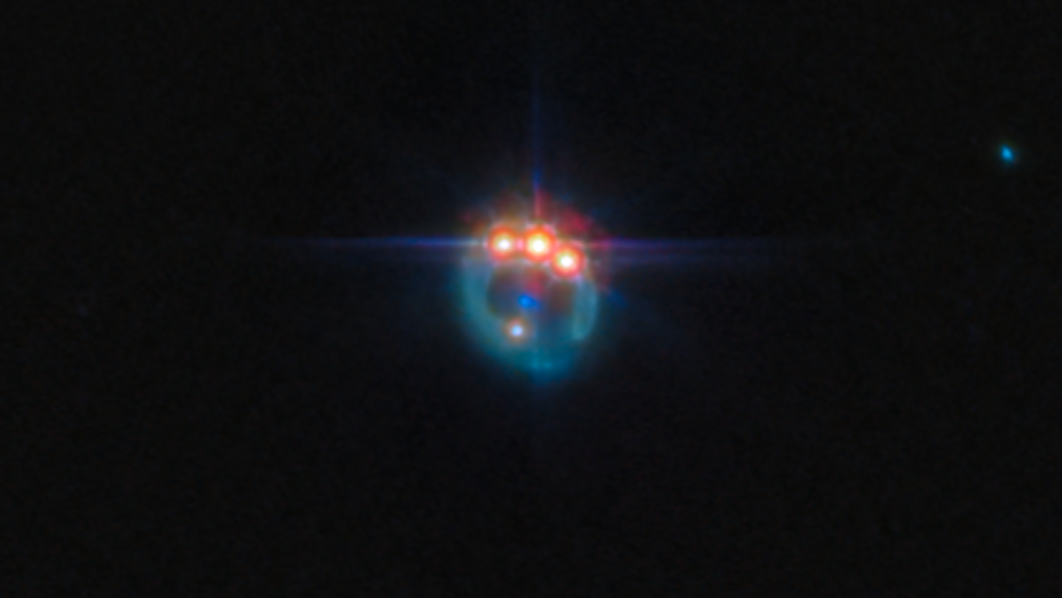
A sparkling jeweled ring, created through a cosmic phenomenon called gravitational lensing, has been imaged by the James Webb Space Telescope.
The new image captures a distant quasar known as RX J1131-1231, which lies about 6 billion light-years from Earth. The powerful gravitational field of a nearby elliptical galaxy, located in the foreground of the image, warps the light of the quasar — which is an extremely luminous active galactic nucleus (AGN) — creating a bright arc and duplicate views of the object, ultimately procuring a visual that looks like gemstones on a ring.
Quasars are powered by large amounts of gas and dust falling into a galaxy's supermassive black hole, causing the region to shine very brightly. The effects of gravitational lensing, which occurs when a massive object, like a galaxy, bends the light from a more distant source, allow astronomers to study regions close to the black hole part of distant quasars, according to a statement from the European Space Agency (ESA).
"Measurements of the X-ray emission from quasars can provide an indication of how fast the central black hole is spinning and this gives researchers important clues about how black holes grow over time, "ESA officials said in the statement.
Related: See amazing images from James Webb Space Telescope's 1st year gazing deep into the cosmos (photos)
The elliptical galaxy creating the gravitational lens in the new JWST image appears as a small blue dot in the center of the ring. The galaxy acts as a natural telescope, magnifying the light from the more distant quasar, which is otherwise too far away to study.
"If a black hole grows primarily from collisions and mergers between galaxies, it should accumulate material in a stable disc, and the steady supply of new material from the disc should lead to a rapidly spinning black hole," ESA officials said in the statement. "On the other hand, if the black hole grew through many small accretion episodes, it would accumulate material from random directions. Observations have indicated that the black hole in this particular quasar is spinning at over half the speed of light, which suggests that this black hole has grown via mergers, rather than pulling material in from different directions."
The new image was taken using the JWST's Mid-Infrared Instrument (MIRI) as part of a larger study of dark matter and its distribution in the universe. With these recent observations, and previous views from other telescopes, RX J1131-1231 is considered one of the best lensed quasars discovered to date.







